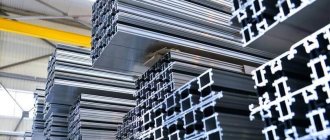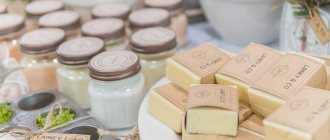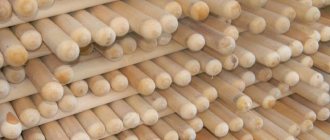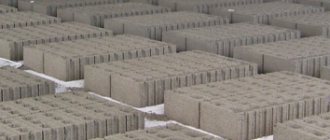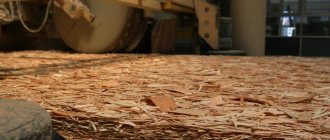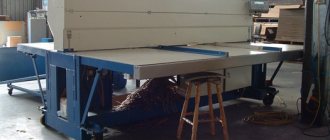What might you need?
The list of required equipment often varies greatly. Specific devices are selected to suit a person’s budget and capabilities. To start production, you will need the following devices:
- heating stove (can be gas or electric);
- cooking container;
- molds for casting.
Casting molds
The listed products are the minimum to start a soap making business. They will require a minimal investment and will allow you to make a profit after a short period, but working with them will require the use of manual labor.
After expansion or with a large budget, entrepreneurs can purchase fully or partially automated equipment; it will simplify the process of creating products and increase efficiency.
Among automated devices, experts highlight:
- industrial refrigerator for cooling;
- stamping device;
- device for slicing finished products;
- molding machine.
Soap Molding Machine
By purchasing modern equipment, it will be possible to fully automate the production process. It is worth noting that the listed products are suitable for creating different types of soap.
For the industrial production of soap products, a separate room will be required. It will need to be rented or purchased (renting is preferable). Personnel will be required to service the molding machine.
Equipment
The process of making bars is very simple. It does not require a lot of equipment.
To make soap you need:
- Cooking boilers. Their capacity can range from 50 to 250 liters. During cooking, they do not react with the raw material due to the presence of an inert surface. Sometimes soap making equipment is equipped with a tap. It is located at the bottom and is designed to drain the resulting liquid.
- Melting containers.
- Shredders. Outwardly, they resemble a regular meat grinder. Designed for processing the base.
- Sawing machine. The machine is equipped with rollers that literally rub additional components (flavors, dyes, etc.) into the base. The device is not used if the soap is made using traditional technology.
- Press. Designed to form the base into a continuous strip.
- Cutter. A device that forms finished bars. After this, they are marked and sent for sale.
Thus, in order to organize soap production, complex and expensive equipment is not required.
Creation at home
A fairly popular option is to make soap at home. This does not require high-tech devices. The emphasis is on product quality. The cost of soap products that are made using manual labor is much higher.
To work from home you will need:
- liquid scales;
- thermometers;
- fridge;
- heating plate;
- measured products;
- casting molds;
- stainless steel pans.
Stainless steel pans
There are two main ways to make soap: cold and hot. Depending on which method is chosen, the speed of receiving the goods will change. With the cold method, all components are mixed and placed in mixing molds for a long period (1-12 months).
The hot method is characterized by high heating of the pan when mixing the components, so the products are sold within 1-2 weeks after cooking.
Experts have proven that the longer soap is stored, the better quality and more aromatic it becomes.
Home production is a labor-intensive process. Manufacturers can make a profit only after creating a large quantity of goods. It is not difficult to implement it via the Internet; you just need to present the product correctly.
What prospects does a home business promise?
And if the wait for the payback of a full-fledged workshop, even according to optimistic calculations, will take at least 1.5 years, then the production and sale of handmade soap as a business is more promising in this regard. Not only will its organization not require large investments, but also the cost of finished products is almost half the selling price.
The demand for handmade soap is consistently high. And this is explained by the use of natural ingredients in its production process. And given that today there is an increasing tendency on the part of consumers to buy everything “original and of high quality,” it becomes clear why the craftsmen do not keep the goods prepared for sale.
In terms of technology, the production of handmade soap is even somewhat simpler - there is no stage of saponification of fats. In their work, craftsmen use special soap bases of different compositions, which only need to be melted and poured into molds. In addition to the main ingredient, various additives are used:
- essential oils,
- dried herbs,
- scrubbing particles,
- loofah,
- natural pigments,
- glycerol,
- vitamins.
And this business is not only interesting, but also low-cost, since the work requires a minimum set of equipment:
- plate,
- containers,
- forms.
In order to offer customers a wide variety of products, it is important to buy soap molds of different configurations. They can be made from many materials, but experienced soap makers advise purchasing silicone ones. Special silicone for making soap molds is completely safe for human health, easy to use and durable.
Silicone molds for making soap
Making soap by hand at home is a real space for imagination for creative people. Here it is quite possible to develop hundreds of recipes based on a variety of components. Having occupied this niche, you can organize a business both for producing entire batches of products and for fulfilling private orders. Over time, when things get going, you can think about opening your own retail outlet or online store.
Solid soap products
The most popular and easiest to make is solid soap. It is extremely popular. It is easier to create it, and it is sold faster on the market, especially if we are talking about an economic option.
Laundry soap production process
A beginner can easily start making laundry soap; it does not require the addition of various dyes and flavors.
Such soap is in demand and profitable to manufacture.
The equipment for producing laundry soap will require simple equipment; specialists can create it at home.
Among solid products it is worth highlighting:
- economic;
- toilet;
- antibacterial;
- baby soap.
All types of solid products will need to be created for a wide range of customers to reach the next level of entrepreneurship. Specialists can limit themselves to a specific type only at the initial stage.
Sales strategy for finished products
Russian-made soap in a wide range is presented on store shelves. But a high level of competition is not a reason to give up, since retail outlets are always interested in expanding the lines of products presented to consumers.
The best option is to establish wholesale sales of finished products. Thus, without lying in warehouses, all manufactured products will be sold immediately.
Who can you offer soap produced within the factory?
- retail chains,
- private hardware stores,
- trading warehouses,
- children's stores,
- pharmacies.
Homemade soap can be easier to sell because the finished product is sold in retail. You can offer original products through the Internet and newspaper advertisements. Having developed a client base and studied the technology in detail, you can enter another sales market - handmade stores and natural cosmetics stores, because small retail outlets often take soap from masters for sale. But for this, most likely, you will need to develop your own logo and attractive packaging. In addition, such cooperation will require official registration of the business, which involves certain costs for tax deductions and product certification.
Interesting articles:
Where to get money for small business development?
Your own business producing dumplings at home - are there any prospects?
An interesting niche is the production of church candles.
Liquid soap products
Many people want to start a business selling only liquid soap. The difference in the production of solid and liquid versions lies in just a few details. As in the production of regular soap, fats are heated in a vat, but potassium hydroxide or a similar alkali is added. As a result, upon cooling, it is possible to obtain liquid soap. Instead of molds, it is placed in containers.
It is recommended to add various oils to make the liquid version more popular in the market.
Different types of oil are added to soap for a better product.
If you can create a unique formula that people like, soap makers can easily increase their production.
Equipment for the production of liquid soap plays a secondary role in the manufacturing process. If you want, starting a business is not difficult even with simple household appliances.
Necessary conditions for production
The soap-making workshop is generally located in a relatively high room, namely its height should be at least 3 m. Ideally, the floor should be made at a slope so that the condensate flows directly into the sewer. It is best to cover the ceiling, floor and walls with moisture-resistant material. For the comfort of all workers, it is desirable to have heating, as well as natural and additional lighting.
Soap production equipment
As for certain engineering conditions, the nominal power of the network into which the soap production line will be connected must be at least 60 kW/h, and the network voltage must be 380 V.
Premises requirements
Considering the fact that water is an integral part of the soap making process, you must ensure a continuous supply of water. Do not forget that the water must be additionally softened. The fact is that water, as is known, contains manganese and iron; if their content is low, this problem can be solved with the help of filters, otherwise you will have to resort to a multi-stage water treatment system.
Typically, additional ventilation in the production room where soap making takes place is not necessary, since large amounts of harmful substances and heat are not released during the entire process. The only exception is the soap making process, which uses various fragrances.
Raw materials
Every businessman will need to regularly purchase raw materials. To create high-quality soap you will need the following materials:
- Fat components or finished soap products as a base (the first option involves creating the product from scratch).
- Alkalis.
- Dyes.
- Stabilizers.
- Fragrances.
- Additives to add a unique effect (antibacterial powders, skin moisturizers, therapeutic and prophylactic elements).
The listed components are combined into the finished product. For large-scale production, you will need to purchase all this so that you can create different products.
Raw material base for the soap production process
The necessary components and technology of the process itself depend on the type of raw material. Thus, a distinction is made between the full production cycle, when cooking is carried out from fats, and the production of ready-made soap, which is based on semi-finished products (soap base).
If you make soap from scratch, then you will need vegetable and animal fats.
Natural fats
Animal fat in this case can be:
- mutton;
- pork;
- beef;
- fish and other processed products.
As for liquid soap, liquid vegetable oils are mainly used in its production. In addition to fats, so-called lards are used, which are the same liquid fat components, however, treated with hydrogen. After appropriate processing, they turn from a liquid state into a solid state.
Animal fats can also be of natural or synthetic origin.
If we talk about some basic soap recipes, then in addition to everything listed, it also includes esters, such as palm oleate and stearate.
However, it doesn’t end there; in addition to the main raw materials, the soap also includes the basic ones, which include:
- alkalis;
- dyes;
- bleaches;
- stabilizers;
- fragrances and so on.
Each of these components plays its role in both the external and internal qualities of the final product.
The color of laundry soap depends on its composition
If we talk about a simplified method of soap making, then we are talking about a ready-made soap base, which is melted during the production process and various additional ingredients are added.
The recipe for each individual type of soap can include a wide variety of variations of components, it all depends on what properties they ultimately want to achieve. It is no secret that the most popular soap is considered to be the one made primarily from natural ingredients.
If you are planning to launch a line for the production of laundry soap, be prepared for the fact that during the processing of its components a sharp, unpleasant odor of grease will arise. Therefore, in this situation, you need to think about installing filters on exhaust ventilation systems.
Process of creation
Soap is created through chemical reactions. Various equipment helps in the production of detergent, speeding up the process and allowing the production of huge quantities of goods in a short period of time. The more technological devices, the faster and more goods are produced.
If the creation is carried out in an industrial premises using special technical means, then it is necessary to highlight the following stages of production:
- The digester heats the main components and starts the chemical reaction.
- The amount of raw material that the equipment can handle is placed. After this, soap glue is obtained.
- Separation of soap glue into liquid and solid components. This process does not take much time, after which the product is almost ready.
- Adding various dyes, fragrances and other elements to the solid component.
- Unique technologies can be applied here or classic developments can be used.
- Pressing the mass.
- Slicing and packaging.
Soap packaging equipment
The creation process is very simple, the main thing is to maintain proportions and mix matching elements. Every businessman is recommended to start with home production to understand how the product is created. If you follow this point, errors will be eliminated when making soap on an industrial scale.
An important point is the hiring of personnel who will service technical devices. Modern molding machines are automated; only 1 person is enough to operate them.
Product characteristics
It is easy to start such a business due to the widespread use of these products in domestic and industrial environments. Features of the detergent:
- High performance;
- Use at any temperature;
- No allergic reactions to the skin;
- Low cost and cost of sales;
- Complete decomposition into biological components;
- Fire safety and non-toxicity;
- Duration of storage.
Solid varieties are distinguished by their purity, environmental friendliness and first-class quality, corresponding to GOST 30266-95. The soap raw material composition does not include surrogate materials and substances. Products are manufactured with an antibacterial effect and without preservatives, using modern technologies.
Is it profitable?
The equipment must be wear-resistant and comply with safety standards. Payback depends on the volume of products created and the search for places to sell. If you can find partners who will buy all the goods received, then the expensive equipment will pay for itself within a few months. You will need to find partners who will supply raw materials in bulk at a competitive price.
Many people have achieved success with minimal investment. Creating soap products is a type of entrepreneurial activity that is accessible to everyone.
With the right calculation, there is always the opportunity to move to a higher level. In case of failure, it is easy to sell raw materials and all accessories.
The purchase of special equipment must be carried out in a specialized store that provides a guarantee, as well as quality certificates. The success of all business activities depends on reliability. Making soap is a very profitable process that will definitely bring profit.
Primary requirements
If you decide that you want to open your own soap production line (laundry, liquid or cosmetic), you will need three main resources for this:
Popular forms of soap
- Premises (if you are planning to open a small soap production line, the productivity of which will be within 80 kg/h, then a premises measuring from 60 to 85 m2 will be enough for you).
- Special equipment for soap making, as well as a special process map.
- Special raw materials.
This concerns the technological side of the matter. In addition, you just need to enlist the support of people who will work for you (you will need to hire employees who are knowledgeable and able to work in this area), find a warehouse for storing raw materials and finished products, and, of course, distribution channels.
Income and expenses
A business plan for soap production takes into account two types of expenses - starting and regular. Start-up costs include those costs that are required to open a business.
Table 4. Components of start-up capital for starting a business
| Expense item | Amount (rub.) |
| Registering a business and obtaining licenses | 30 000 |
| Rent of premises for a month | 20 000 |
| Carrying out cosmetic repairs | 15 000 |
| Purchase of equipment and raw materials | 45 000 |
| Marketing campaign | 60 000 |
| Internet promotion services | 20 000 |
The overwhelming majority of investments are spent on purchasing equipment and advertising the brand. You cannot save on these items, since the start of sales depends on them.
Reference. If you have limited financial resources, it is recommended to purchase equipment in stages. If an entrepreneur gets by without high-interest loans, he will save tens of thousands of rubles.
Table 5. Regular costs for maintaining production
| Expense item | Amount (rub.) |
| Territory rental | 20 000 |
| Making utility payments | 30 000 |
| Payment of wages to employees | 110 000 |
| Carrying out promotional events | 40 000 |
The average markup that soap makers allow themselves is 200%. When maintaining sales at a stable level, profitability is 35-40%.
Table 6. Income from the sale of soap
| Soap type | Cost price | Monthly sales | Revenue (RUB) |
| Hygienic | 50 | 200 | 10 000 |
| Children's | 60 | 200 | 12 000 |
| Cosmetic | 60 | 150 | 9 000 |
| Decorative | 70 | 250 | 17 500 |
| Exfoliating | 70 | 140 | 9 800 |
| Cosmetic | 100 | 200 | 20 000 |
| For shaving | 70 | 200 | 14 000 |
| Dairy | 90 | 150 | 13 500 |
| Total | 105 800 |
The net profit that remains after taxes is about 80,000 rubles per month. It is formed based on the approximate price list presented in the table.
Why does such a business have a future?
The main thing for the consumer is the price of the product. The production of laundry soap does not incur large costs. At the same time, there is a great demand for the product, which is caused by the shelf life and low cost of soap. There is always the opportunity to change the sales market: if it was rejected at one enterprise, it is easy to sell it to the agricultural industry.
The natural composition of the soap makes it popular also among allergy sufferers. That is why such a business has a future. This is a never-ending demand for a product. And as long as there is a need, business will flourish.
Laundry soap...we make it ourselves
For almost 2 years now, I have been washing all my underwear and belongings of my three men, of different ages, with soap that I make myself. With its help, such old stains were washed off that I had already given up on. What pushed me to do this was the poor quality of the washing powder, the oil accumulated from cooking French fries, and the experience of others in soap making.
Just last night we made this soap. Many recipes have been tried. We stopped there for now. I am sharing with you, dear forum users and members.
In our family, usually all the adults who are present at home at that moment take part in its preparation. And why all??? But because the kneading process is quite tedious and requires a lot of strength. Today I had at my disposal 4 liters of olive oil after frying, carefully collected and brought to me by a friend. Then I will share the soap).
The recipe I use is designed to make 1.5 kg of soap.
1. Oil - 1 liter (corrected error kg)
2. Caustic soda - 150 g (I take it this way, but according to Elena Oleynik’s advice, you need to take 20 g less.)
3. Water (cold) - 380 g
What do you MUST !!!!! must know when preparing soap - SAFETY PRECAUTIONS . You will be working with alkali , and this is quite dangerous !
That's why.
We buy for households. store: 1. Household gloves (good and tall)
2. Respirator (in extreme cases, cover your face up to your eyes with a towel).
We put on an old robe and apron.
GLASSES with lenses are required! We close our eyes from accidental contact with the prepared mass.
You also need:
1. Container for making soap. Its volume depends on the amount of this soap itself as a result of soap making. You can use glass, plastic or stainless steel. Enameled ones are not worth it, the enamel is corroded, checked. My pan is now only used for soap. DO NOT use aluminum containers.
2. A wooden or stainless steel spatula with which you will knead the soap.
3. Container for dissolving soda (stainless steel or special plastic).
4. Mixer (powerful so it doesn’t burn).
5. Containers for dispensing soap (large glass trays, Tetra Pak milk bags, any plastic ones that you didn’t have time to throw away, special molds for soap).
6. Kitchen scales
7. Metal strainer (not aluminum). May be needed.
The room must be WELL VENTILATED!!!!!
So, let's begin!
Prepare the work surface and remove everything from it. We escort everyone out of the place of “military operations” with instructions - not to look into the premises under any pretext. We put on an old robe and put an apron on top. A respirator (towel) is placed over the nose. Glasses on the eyes. Gloves on hands.
oil (if you don’t mind freebies), used vegetable oil and even machine oil (but I don’t recommend it)), animal fat (melt first).
Caustic soda
Sodium hydroxide (lat. Natrii hydroxidum; other names - caustic soda , caustic , caustic soda , caustic alkali) is the most common alkali, chemical formula NaOH.
Scales
The soda should be exactly according to our recipe.
Water: Room temperature, cold (also according to recipe).
IMPORTANT!!!!
Pour baking soda into the water while stirring.
Turn on the hood!! We open the vents and windows. Ideal outdoor option in the country.
Stir the solution with a wooden spatula or stainless steel spoon until the soda is completely dissolved.
CAREFULLY!!!!
The container heats up.
When the soda dissolves (I don’t recommend looking into the saucepan, because the alkali vapor is VERY caustic),
CAREFULLY!!! IMPORTANT!! , before pouring the soda solution into the oil, it is advisable to strain it through a sieve!!!!! (added)
Pour the soda solution into preheated oil
DO NOT POUR the sediment of undissolved soda into the oil! Carefully collect it in a bag and throw it in the trash. Quench with vinegar or citric acid. We comply with the principles of ecological living on the planet).
Stir the resulting mass GENTLY.
The mass begins to turn white and thicken.
Connect the mixer to the mixer.
Alternate the mixer with stirring with a spatula (in one direction, do not splash).
This is where the help of family members, for example a husband, comes in handy.
By the way, it’s better not to expose your arms while doing this . If the solution gets in, it will sting, but not fatally, of course. But, you urgently need to rinse with acidified water and then in running water.
This action can last up to 40 minutes. Watch the consistency of the solution. It will thicken.
The mixer reduces mixing time. Without it, the procedure will take twice as long.
The mass should resemble thick sour cream.
Prepare a container for pouring soap.
I used empty milk cartons and other plastics. You can use molds for soap or for baking cookies (but in the future they should not be used for baking).
Pouring soap. Again male strength turned out to be irreplaceable).
We place our boxes in a place inaccessible to children and curious adults, cover them with a bag or paper to protect them from dust and debris.
In the morning the soap had already hardened.
We wait 3-4 days.
After the soap has hardened and freely jumps out of the boxes, we free it from them, cut it into pieces and leave it to mature for 3-4 weeks.
This is the soap we made 3 weeks ago.
I wash with soap like this:
I take a bar of soap, knead it or crumble it into pieces in a stainless saucepan, fill it with water, put it on the fire and dissolve it while stirring. I pour the resulting solution into the machine when washing. You can add conditioner.
Happy washing to you.
Remember and follow SAFETY!!!
Results
Having dealt with the question of how laundry soap is made in production, we can conclude that the process of manufacturing the product does not involve complex operations. In order to produce it with high quality, you should think about purchasing multifunctional equipment that can produce several types of products, which will allow you to quickly change the profile if necessary. To save on employee wages, you need to purchase an automated line, the maintenance of which consists of loading raw materials, monitoring work and unloading the finished product.
Making laundry soap for sale - a business idea that works
When we think about starting a soap business, we immediately think of bright labels and beautiful packaging on display. My neighbor Alena started with the production of such elegant products. Her design work literally attracted the eye. The company flourished; it seemed that nothing needed to be changed in the successful scheme.
To my surprise, Alena added laundry soap to the assortment of cosmetic products.
For what? These nondescript bars on the bottom shelves of stores don’t even come close to competing with designer pieces. Yes, the girl agrees, laundry soap does not look so attractive, but it has a number of advantages over toilet soap. Therefore, its popularity has not decreased since the times of the USSR.
Cooking the mixture and its subsequent processing
Sulfonic acids are added to the resulting liquid. They play the role of a catalyst. The liquid is boiled, stirring constantly. Gradually it becomes thick, viscous and viscous. The resulting mass is called soap glue.
The next step is salting out with sodium chloride (in other words, processing). It is important to remember that detergents of laundry soap depend only on salts of fatty acids. All other components are absolutely useless. In this regard, they are removed from soap glue. At the end of this stage, a purer, more concentrated and dense product is obtained.
Types and characteristics of laundry soap
In general, the composition of laundry soap is established by GOST, which currently exists in our country. But, unlike the soap of Soviet times, today's laundry soap can be very different - differ in smells, composition, purpose, color, consistency, presence or absence of packaging, etc.
Most often, soap is distinguished by:
- State (solid, liquid, powder, ointment)
- Based on the fat content of acids contained in soap, it is usually divided into three product classification groups: 75%) - category 1, 70% - category 2 soap, 65% - category 3.
- By type of production – glued, polished or cored
- By weight - pieces from 150 grams to half a kilogram.
- Form - recently, laundry soap can be found not only in its usual form, but also in another - the most bizarre.
- Name. Although, as a rule, rare companies involved in the production of laundry soap leave a name for the soap.
As you can see, all this is literally for every “taste and color”.
